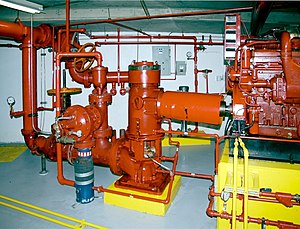-
1
- #1
PrakMS
Mechanical
- Dec 5, 2013
- 8
Hi everyone,
I'm new to the filed of Fire fighting systems, because of which lot of people aer confusing me about the position of Concrete fire water tanks. My question is simple:
"Does NFPA allow industries to have a underground Fire water tank (concrete construction)? If yes can you pin point where it is stated in the standard"
I have gone through NFPA 22 and NFPA 24 briefly but it is not clear to me whether this is allowed.
Thanks..
I'm new to the filed of Fire fighting systems, because of which lot of people aer confusing me about the position of Concrete fire water tanks. My question is simple:
"Does NFPA allow industries to have a underground Fire water tank (concrete construction)? If yes can you pin point where it is stated in the standard"
I have gone through NFPA 22 and NFPA 24 briefly but it is not clear to me whether this is allowed.
Thanks..

